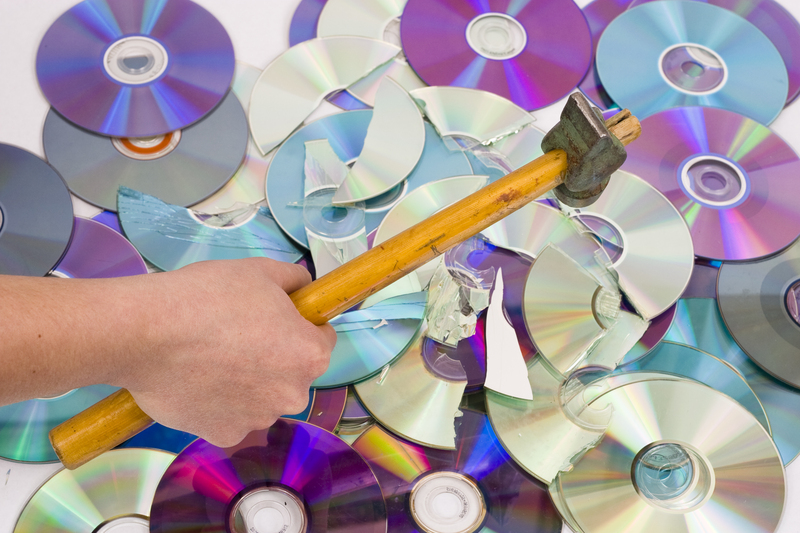Reimagining Our Approach to Microplastic Waste
Understanding Microplastic Waste: A Growing Global Crisis
In recent years, microplastic pollution has emerged as one of the foremost environmental challenges facing our planet. Microplastics, tiny plastic particles less than 5mm in size, have infiltrated virtually every corner of the globe, from remote mountain peaks to the deepest ocean trenches. Addressing this pervasive problem requires us to rethink our strategies and forge new pathways toward sustainable management and reduction of microplastic waste.

What Are Microplastics?
Microplastics are classified as either primary or secondary:
- Primary Microplastics: These are manufactured at microscopic sizes, such as those found in personal care products, industrial pellets, and synthetic clothing fibers.
- Secondary Microplastics: These originate from the breakdown of larger plastic items like bags, bottles, and fishing gear due to environmental weathering and UV exposure.
Why Should We Care About Microplastic Waste?
Reimagining our approach to microplastic waste management is not just an environmental imperative; it's a public health priority. Microplastics can carry toxic chemicals, disrupt ecosystems, and even potentially impact human health through ingestion and inhalation. Consider the following consequences:
- Harm to Marine Life: Fish, birds, and marine mammals can mistake microplastics for food, leading to physical harm, malnutrition, and death.
- Bioaccumulation: Chemicals in plastics may accumulate in living organisms, moving up the food chain and affecting humans.
- Persistent Pollution: Microplastics do not biodegrade, and their accumulation in the environment is effectively permanent without intervention.
- Threats to Agriculture: Plastics in soil can affect crop growth and soil health.
Given these urgent threats, it is critical to develop comprehensive solutions and rethink our current practices.
Current Approaches and Their Limitations
Most current efforts to mitigate microplastic contamination revolve around:
- Cleanup Initiatives: Removing visible plastics from beaches, rivers, and oceans.
- Waste Management Improvements: Enhancing recycling and waste processing infrastructure.
- Legislation: Banning microbeads in cosmetics, single-use plastics, and lightweight bags.
- Public Awareness Campaigns: Educating consumers about the dangers of plastic waste.
While these measures are essential, they fall short of addressing the complexity of microplastic pollution. Tiny plastic particles evade most filtration systems, recycling rates remain low globally, and existing bans target only a fraction of plastic sources. Our strategy requires a paradigm shift.
Reimagining Microplastic Waste Management: A Multi-Faceted Approach
1. Tackling the Source: Reducing Plastic Production and Consumption
At the heart of the microplastic problem lies our dependence on plastics. To meaningfully address microplastic pollution, we must prioritize source reduction:
- Innovate Alternative Materials: Support the development and adoption of biodegradable, compostable, and bio-based materials for common plastic products.
- Promote Reusable Options: Encourage the use of reusable containers, bags, and packaging in homes and businesses.
- Redesign Products: Rethink product design to minimize plastic content and eliminate unnecessary plastic components, especially in clothing and packaging.
Reducing our reliance on plastics--especially single-use items--can significantly cut the generation of microplastic waste before it even begins.
2. Advancing Wastewater Treatment Technologies
Since microplastic particles commonly enter natural water systems through wastewater, upgrading water treatment facilities is vital. Innovative solutions include:
- Advanced Filtration: Membrane bioreactors and nanofiltration systems designed to capture microplastics.
- Magnetic Separation: Using magnetized nanoparticles to capture and remove microplastics from water with minimal energy inputs.
- Integrated Urban Water Management: Developing holistic water management systems that address runoff, stormwater, and sewage as interconnected sources of microplastic contamination.
Investing in these technologies is essential for reducing the outflow of microplastics into rivers and oceans.
3. Transforming Textile Production and Use
A significant proportion of microplastic fibers in waterways come from synthetic textiles shed during laundry. Addressing this requires:
- Industry Standards: Encouraging the textile industry to develop and adopt standards for low-shedding materials.
- Innovative Fibers: Creating alternative fabrics that are both functional and environmentally friendly.
- Microfiber Filters: Promoting the use of washing machine filters that can trap fibers before they enter wastewater.
The fashion industry must play a proactive role in minimizing textile-based microplastic pollution.
4. Enhancing Plastic Recycling and Circular Economy Practices
The traditional linear model of "take, make, dispose" is not sustainable. Instead, a circular economy approach can help keep plastics in use and out of the environment for longer:
- Design for Recycling: Encourage product manufacturers to design with recyclability in mind, simplifying material choices and labeling.
- Closed-Loop Systems: Implement systems in which plastics are reused, remanufactured, or upcycled into new products.
- Deposit and Return Schemes: Incentivize the return of plastic packaging for recycling, reducing the incentive to discard plastics irresponsibly.
A robust circular plastics economy reduces the leakage of microplastics into the environment.
5. Driving Change Through Policy, Research, and Community Action
- Regulatory Frameworks: Governments can enforce stricter standards for plastic production, microplastic emissions, and waste management practices.
- Support for Scientific Research: Increased funding for research into microplastic detection, impacts, and remediation technologies is crucial.
- Grassroots Mobilization: Community-driven initiatives such as river cleanups, citizen science programs, and local legislation have real power to influence policy and corporate practices.
6. Harnessing Technology for Microplastic Monitoring and Removal
Effective management of microplastics is impossible without accurate detection and monitoring. Innovations are making this more feasible:
- Environmental Sensors: Deploying sensors capable of real-time detection of microplastics in water, soil, and air.
- AI and Data Analytics: Using artificial intelligence to interpret big data and identify microplastic hotspots.
- Autonomous Cleanup Devices: Leveraging robots and drones to automate the removal of microplastics from vulnerable habitats.
Empowering Consumers: What Can Individuals Do?
Change starts with informed choices. Individuals can make a tangible difference in the fight against microplastic waste by:
- Choosing natural fiber clothing and opting for sustainable fashion brands.
- Using a laundry bag or filter to collect microplastic fibers during washing.
- Avoiding personal care products that contain microbeads and supporting brands with plastic-free initiatives.
- Reducing single-use plastics in everyday life and adopting reusable alternatives.
- Participating in local cleanups and becoming advocates for stronger environmental policies.
Emerging Innovations in Microplastic Solutions
Bioremediation and Enzyme Technologies
Emerging research has identified bacteria and enzymes capable of breaking down plastics--even at micro scales. Bioremediation leverages nature's own tools, such as specially engineered microorganisms, to degrade plastic pollution in situ. While still in its infancy, this approach offers potential breakthroughs in long-term microplastic recovery.
Eco-Engineering and Green Infrastructure
Nature-based solutions--such as constructed wetlands and "green" stormwater management systems--can filter and capture microplastics before they reach major bodies of water. By integrating urban green spaces and innovative plant-based filters, cities can intercept microplastic flow within their landscapes.

The Global Collaboration Imperative
Microplastic pollution knows no boundaries. Rivers, oceans, and atmospheric currents transport these particles across continents, making international cooperation essential. Global frameworks such as the United Nations Environment Programme (UNEP) and international treaties play a pivotal role in coordinating action, setting standards, and facilitating knowledge exchange.
Charting the Path Forward
- Integrated Policies: Align policies across sectors--from manufacturing regulations to waste management and environmental protection.
- Data Sharing: Encourage open access to scientific findings and best practices.
- Shared Investment: Pool resources for research, innovation, and infrastructure upgrades on a global scale.
Conclusion: Toward a Microplastic-Free Future
The task of reimagining our approach to microplastic waste is daunting but necessary. As we continue to uncover the far-reaching consequences of microplastics, it is clear that incremental progress is not enough. We must embrace holistic, innovative, and collaborative strategies that address the issue at every stage--design, production, use, and disposal. By coupling science and technology with systemic policy reform and personal responsibility, we can move closer to a world where microplastic pollution no longer threatens biodiversity, food security, or public health.
Our choices today create the blueprint for a cleaner, more resilient tomorrow. Let us seize this moment to reimagine, rethink, and revolutionize our relationship with plastic--before microplastic waste becomes the defining legacy of our age.